
Richard III was King of England from 26 June 1483 until his death in 1485. He was the last king of the Plantagenet dynasty and its cadet branch the House of York. His defeat and death at the Battle of Bosworth Field marked the end of the Middle Ages in England.

Edward IV was King of England from 4 March 1461 to 3 October 1470, then again from 11 April 1471 until his death in 1483. He was a central figure in the Wars of the Roses, a series of civil wars in England fought between the Yorkist and Lancastrian factions between 1455 and 1487.

Elizabeth Woodville, later known as Dame Elizabeth Grey, was Queen of England from 1 May 1464 until 3 October 1470 and from 11 April 1471 until 9 April 1483 as the wife of King Edward IV. She was a key figure in the Wars of the Roses, a dynastic civil war between the Lancastrian and the Yorkist factions between 1455 and 1487.

George Plantagenet, Duke of Clarence, was the sixth child and third surviving son of Richard Plantagenet, 3rd Duke of York, and Cecily Neville, and the brother of English kings Edward IV and Richard III. He played an important role in the dynastic struggle between rival factions of the Plantagenets now known as the Wars of the Roses.

Richard Neville, 16th Earl of Warwick, 6th Earl of Salisbury, known as Warwick the Kingmaker, was an English nobleman, administrator, landowner of the House of Neville fortune and military commander. The eldest son of Richard Neville, 5th Earl of Salisbury, he became Earl of Warwick through marriage, and was the wealthiest and most powerful English peer of his age, with political connections that went beyond the country's borders. One of the leaders in the Wars of the Roses, originally on the Yorkist side but later switching to the Lancastrian side, he was instrumental in the deposition of two kings, which led to his epithet of "Kingmaker".
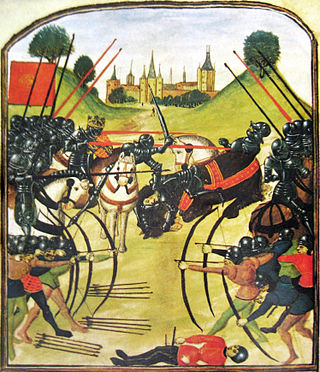
The Battle of Tewkesbury, which took place on Saturday 4 May 1471, was one of the most decisive battles of the Wars of the Roses in England.
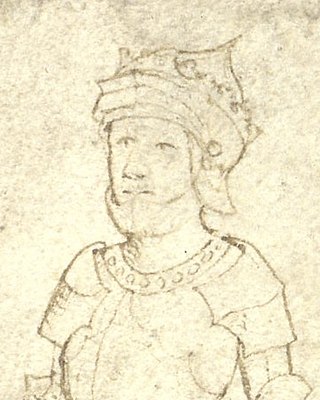
Edward Plantagenet, 17th Earl of Warwick was the son of Isabel Neville and George Plantagenet, 1st Duke of Clarence, and a potential claimant to the English throne during the reigns of both his uncle, Richard III (1483–1485), and Richard's successor, Henry VII (1485–1509). He was also a younger brother of Margaret Pole, 8th Countess of Salisbury. Edward was tried and executed for treason in 1499.

The House of York was a cadet branch of the English royal House of Plantagenet. Three of its members became kings of England in the late 15th century. The House of York descended in the male line from Edmund of Langley, 1st Duke of York, the fourth surviving son of Edward III. In time, it also represented Edward III's senior line, when an heir of York married the heiress-descendant of Lionel, Duke of Clarence, Edward III's second surviving son. It is based on these descents that they claimed the English crown. Compared with its rival, the House of Lancaster, it had a superior claim to the throne of England according to cognatic primogeniture, but an inferior claim according to agnatic primogeniture. The reign of this dynasty ended with the death of Richard III of England at the Battle of Bosworth Field in 1485. It became extinct in the male line with the death of Edward Plantagenet, 17th Earl of Warwick, in 1499.

Cecily Neville was an English noblewoman, the wife of Richard, Duke of York (1411–1460), and the mother of two kings of England—Edward IV and Richard III. Cecily Neville was known as "the Rose of Raby", because she was born at Raby Castle in Durham, and "Proud Cis", because of her pride and a temper that went with it, although she was also known for her piety. She herself signed her name "Cecylle".

Edward of Westminster, also known as Edward of Lancaster, was the only child of Henry VI of England and Margaret of Anjou. He was killed aged seventeen at the Battle of Tewkesbury.
Humphrey Stafford, generally known by his courtesy title of Earl of Stafford, was the eldest son of Humphrey Stafford, 1st Duke of Buckingham and Lady Anne Neville.

Lady Isabel Neville was the elder daughter and co-heiress of Richard Neville, 16th Earl of Warwick, and Anne de Beauchamp, suo jure 16th Countess of Warwick. She was the wife of George Plantagenet, 1st Duke of Clarence. She was also the elder sister of Anne Neville, wife and consort of Clarence's brother, Richard III.
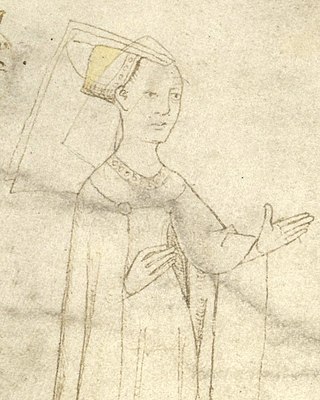
Anne Beauchamp, 16th Countess of Warwick was an important late medieval English noblewoman. She was the daughter of Richard Beauchamp, 13th Earl of Warwick, and his second wife, Isabel le Despenser.
Events from the 1470s in England.
Events from the 1480s in England. This decade marks the beginning of the Tudor period.
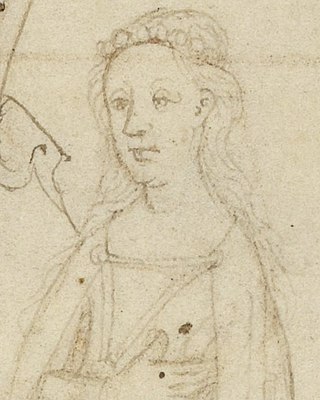
Isabel le Despenser, Countess of Worcester and Warwick, LG was the posthumous daughter and eventually the sole heiress of Thomas le Despenser, 1st Earl of Gloucester by his wife, Constance of York, daughter of Edmund of Langley. She was born six months after her father had been beheaded for plotting against King Henry IV of England (1399–1413).
Katherine Neville, Baroness Hastings, was a noblewoman and a member of the powerful Neville family of northern England. She was one of the six daughters of Richard Neville, 5th Earl of Salisbury, and the sister of military commander Richard Neville, 16th Earl of Warwick, known to history as Warwick the Kingmaker.
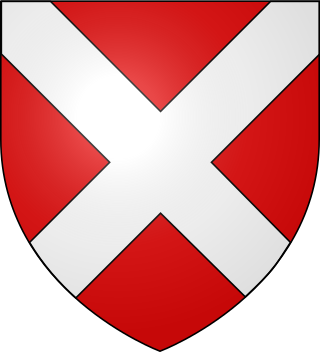
The House of Neville or Nevill family is a noble house of early medieval origin, which was a leading force in English politics in the Late Middle Ages. The family became one of the two major powers in northern England and played a central role in the Wars of the Roses along with their rival, the House of Percy.

The Wars of the Roses, known at the time and in following centuries as the Civil Wars, were a series of civil wars fought over control of the English throne from 1455 to 1487. The wars were fought between supporters of the House of Lancaster and House of York, two rival cadet branches of the royal House of Plantagenet. The conflict resulted in the end of Lancaster's male line in 1471, leaving the Tudor family to inherit their claim to the throne through the female line. Conflict was largely brought to an end upon the union of the two houses through marriage, creating the Tudor dynasty that would subsequently rule England.
Alice Neville, Baroness FitzHugh or Lady Alice FitzHugh, was the wife of Henry FitzHugh, 5th Baron FitzHugh. She is best known for being the great-grandmother of queen consort Catherine Parr and her siblings, Anne and William, as well as one of the sisters of Warwick the 'Kingmaker'. Her family was one of the oldest and most powerful families of the North. They had a long-standing tradition of military service and a reputation for seeking power at the cost of the loyalty to the crown as was demonstrated by her brother, the Earl of Warwick.
























